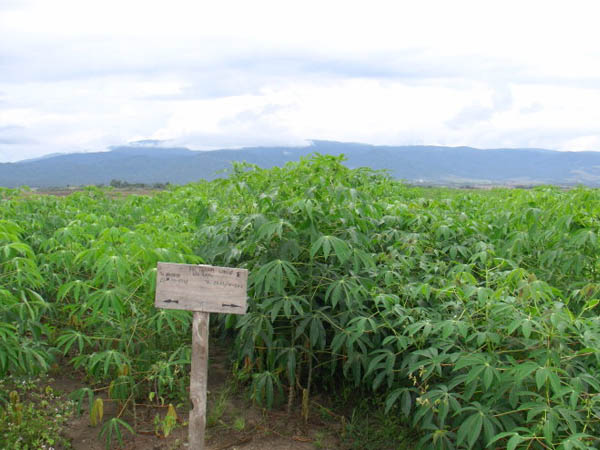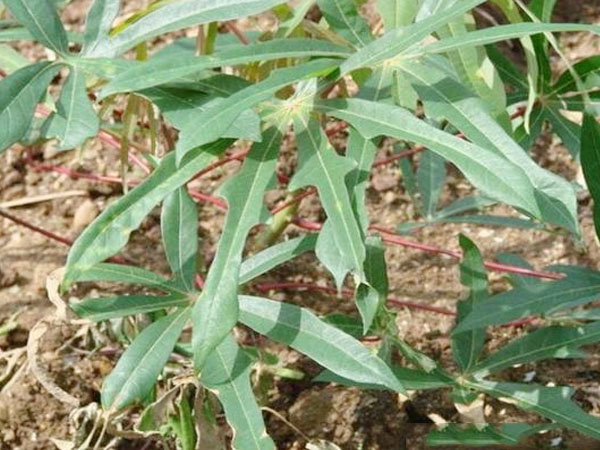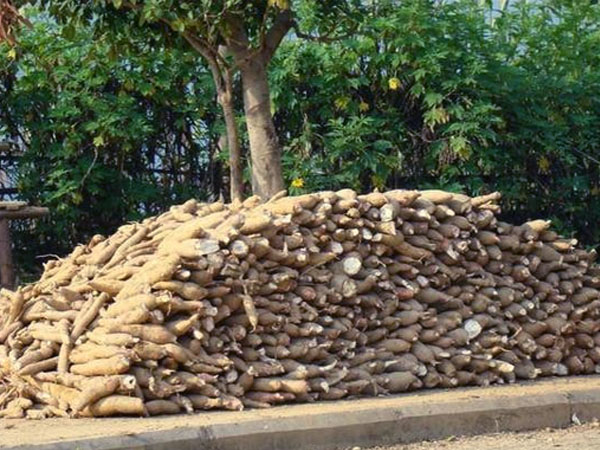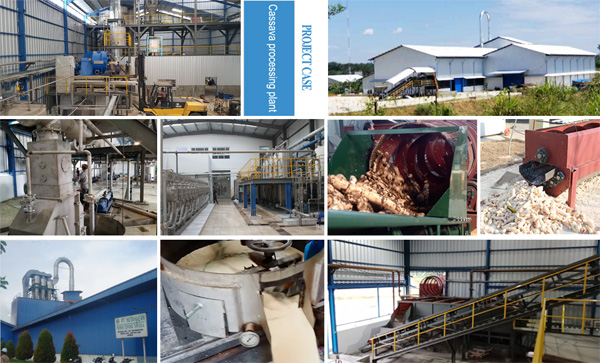How to plant cassava? Tapioca plant care
Industry News / Chat online / Technical support / January 23, 2019
Cassava is a high yielding potato crop. Generally, the roots per hectare can be at least 20 tons. The cassava root starch content is high, generally up to 20% to 25%, and the starch is fine, the viscosity is strong, and it is easy to gelatinize. Cassava is resistant to barren, drought-tolerant and adaptable. It is suitable for hilly, sloping land and sporadic land cultivation, and has low labor costs, low production cost and easy planting. After years of promotion and practice, it has been proved that the full development of hillsides and wasteland to develop cassava cultivation and production can increase farmers' income. Next, Doing Company will briefly introduce the cassava plant methods and cares for you:
 Cassava plantation
Cassava plantation
First, planting good varieties and making selection and processing of cassava stems.
There are many varieties of cassava, and the good varieties have strong adaptability, higher yield and better quality.
Second, stem selection and processing:
1. Stem selection:
Generally, the cassava stalks are fully mature, the cork is stalked, the stems are thick and dense, the epidermis and axillary buds are intact, the buds are coarse and obvious, no pests and diseases are present, no damage, fresh and firm middle and lower stems are better.
Base old stem: tissue aging, low survival rate, low yield; top tender stem: tissue is not full, easy to dry after planting, low rate of shoot germination. Therefore, when the source of the stem is sufficient, the old stem and the tender stem should be avoided.
2. Stem processing:
Soaking seeds with suitable fertilizer for 10 to 15 minutes is beneficial to emergence, strong seedlings and seedlings. The stalk of the former cassava is best cut with a sharp knife. To make the incision smooth, not to detach the epidermis, and not damage the axillary buds. Each segment is 13-20 cm long, and the strong buds are 3 to 5, but in the species. In the case of a lack of stems, short shoots of 7 to 10 cm can also be used. The stems should be cut with the seeds to prevent the water from drying out and affecting the survival. It can control 10% of lime water on the incisions at both ends of the cassava seed to prevent white ants.
 Cassava seedling
Cassava seedling
Third, land selection and land preparation:
Although cassava is not strict with soil requirements, it is a root crop. It generally requires sufficient light, deep soil layers, good drainage, loose soil and potassium-rich land. Cassava is not sensitive to ph values, and red soil wasteland can also be planted. Cassava also needs reasonable rotation, and it is better to make sweet potato, peanut or other legumes.
Cassava is a root, deep-cultivating crop, and the roots are mostly distributed in the topsoil within 23cm, but the roots can reach deep soil layers of 25cm or more. Therefore, the depth of soil ploughing should be more than 23cm, in order to facilitate the expansion of cassava roots and root development. It is generally required to plow 25 to 30 cm, at least not less than 20 cm. This requires the use of machine farming, even large-scale farming, in order to meet the requirements. Should pay attention to drainage, can not accumulate water for too long. When planting, in addition to the shallow slope of the soil layer that is deep and loose and well drained, the general land is suitable for rafting. The size of the raft depends on the depth of the soil and the density of the plant. Generally, the width is 67-83cm, the height is 20~27cm, and it is planted in a single line. In arid places, in order to keep water and fertilizer, you can widen the kneading surface and make it into a width of about 150cm. On the sloping ground, you must wait for the raft to open up the drainage ditch to prevent the water and soil from scouring.
 Harvested cassava
Harvested cassava
Fourth, the cassava planting period and method:
The minimum temperature of cassava germination is 14-16 °C, and it germinates rapidly when it is above 18 °C. In Africa, the average temperature in Southeast Asia is high and the temperature is stable, so it can be planted at various times.
The cassava plant can divided into three stalks inserted types: straight, oblique, and flat. The straight type cassava plant seedlings develop are quick and strong, the roots are evenly stretched, the roots are firmly anchored, and the wind and drought resistance are strong. However, the cassava develop is deep, difficult to harvest out, this insert method should be used in arid and loose conditions; oblique insert cassava develop is easy to dig, but weak wind resistance, should be used in shallow or sloping soil; flat insert methid for cassava plant, when germination opportunities, deep soil, fertile soil, fine cultivation and management conditions Under, it can obtain higher yield, but it should not be used in general land and in dry land.
Straight or oblique insertion, the stem should be exposed to the ground about 3cm. It is advisable to put about 5cm of flat soil. Planting density should be based on soil fertility and variety characteristics. If the soil is fertile, the branching is strong, and the amount of fertilizer is large, the plant spacing can be larger; on the contrary, the soil is thin, the production conditions are poor, the management is extensive, and the planting can be dense.
 DOING company completed cassava processing project
DOING company completed cassava processing project
Five, fertilization:
The yield potential of cassava planting is large. To obtain high yield, fertilizer must be added reasonably. The cassava fertilization should adopt more potassium fertilizer, heavy application of base fertilizer and timely topdressing. in principle. The ratio of the three elements of n, p, and k is generally between 5:1:5 and 5:1:10. The type and quantity of base fertilizer application should be determined according to the fertilizer source and soil fertility. Commonly used compost, soil mixed fertilizer, garbage soil, fire-burned soil, etc. are used as base fertilizer, 1000-1500kg per mu, 7.5kg per superphosphate, combined with land preparation before planting.
Sixth, pinching treatment:
Wind damage and stems and leaves are long, and can be pinching treatment . Generally, the cassava seedlings are about 33.3 cm high, and the maximum growth of stems and leaves and the rapid expansion of the roots need to be pinching treatment separately. Pinching treatment should be combined with the application of quick-acting nitrogen fertilizer. When the growth is thin, the land is poor or the fertilizer is insufficient, it is generally not suitable for pinching treatment.
Seven, pest control:
The pests of cassava seedlings are more serious, so the insects should pay attention to the pest control to ensure the whole seedlings. Cassava has fewer diseases, and leaf spot disease is more common. It can be sprayed with pesticides for prevention and treatment.
Eight, harvest:
Harvesting at the right time can obtain high-yield and high-quality cassava. During the year, the highest yield of cassava roots and starch rate is the harvest period. Generally, wood trees can be harvested 6 to 8 months after planting, and late maturity seeds can be harvested for 9 to 10 months. When more than two-thirds of the leaves of the cassava plant turn yellow, and the surface of the cassava block is thick and easy to peel off, the harvest time is suitable.
contact us
- Do you want to buy machine?
- Yes, I want to buy machine
- No, I want to learn more in advance.
- What is your raw material?
- Cassava
- Potato
- Sweet potato
- Others
- 2. What is the final product you want to produce?
- Garri
- Cassava flour
- Cassava starch
- Cassava chips
- Attiekie
- Bammy
- Others
- 3.What is your capacity plan?
- Small scale garri machine
- 1ton per day
- 2tons per day
- 3tons per day
- 10tons per day
- 20tons per day
- Others
- 3.What is your capacity plan?
- Small scale
- 5tons per day
- 10tons per day
- 20tons per day
- 50tons per day
- 100tons per day
- Others
- 3.What is your capacity plan?
- Small scale
- 5tons per day
- 10tons per day
- 20tons per day
- 50tons per day
- 100tons per day
- 200tons per day
- 300tons per day
- Others
- 3.What is your capacity plan?
- Small scale
- Middle type
- Large scale
- What is your capacity plan?
- Small scale
- 5tons per day
- 10tons per day
- 20tons per day
- 50tons per day
- 100tons per day
- 200tons per day
- 300tons per day
- Others

 Call us
Call us Chat online
Chat online
